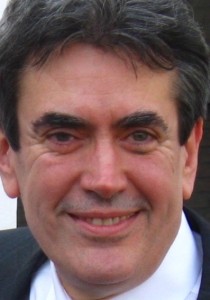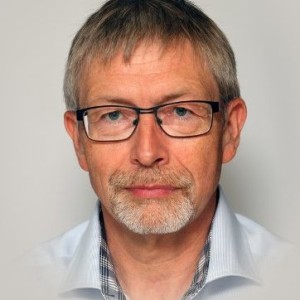Dr. Ajit Mishra and I have organized the upcoming TEG 407X (STG 60) Mechanisms of localized corrosion in Memoriam of Professor José Galvele (March 1937 – July 2011). This year marks the 40th anniversary of Prof. Galvele’s seminal “Transport Processes and the Mechanism of Pitting of Metals” publication. Our goal for the symposium was to bring the best of industry and academia under one roof. We will be honored by the presence of distinguished guest speakers from both industry and academia. A list of lecturers and scope of their talks is presented below.
If you are attending NACE International Annual CORROSION 2016 conference, please join us and help us spread the word!
 40 Years of Prof. Galvele’s Contributions to Corrosion Science and Education in Latin America.
40 Years of Prof. Galvele’s Contributions to Corrosion Science and Education in Latin America.
The critical acidification model developed by Professor José Rodolfo Galvele has advanced our understanding of localized corrosion mechanisms and it is perhaps one of the most important contributions to modern corrosion science. To commemorate the 40th anniversary of Galvele’s iconic “Transport Process and the Mechanisms of Pitting in Metals” publication, we will present details of Galvele’s life work, his legacy, and his contribution to corrosion and materials science research and education in Argentina and Latin America. Finally, Galvele’s later work on pitting and crevice corrosion as well as his contribution to stress corrosion cracking research will be discussed not from a fundamental viewpoint but his personal approach as an investigator, colleague, and mentor.
Localized Corrosion, a Review.
The localized corrosion of metals, including phenomena such as pitting corrosion, crevice corrosion, intergranular corrosion and exfoliation corrosion, is a field that is still the focus of attention in the corrosion literature almost 40 years after the seminal paper by Jose Galvele. In that time, every electrochemical, scanning, and analytical tool available has been brought to bear on these topics. As a result, an abundance of new knowledge exists that Galvele did not have at his disposal. Nonetheless, many unknown issues and some controversies still exist owing in particular to the extraordinarily small length scales and time scales of the initiation process, and the steep chemical and potential gradients that develop immediately. For example, the relative importance of the passive film vs. growth kinetics in controlling the localized corrosion phenomenon is still debated. This talk will review some critical aspects of localized corrosion, with a focus on developments over the past few decades.
 Understanding Crevice Corrosion Stabilization and Repassivation Using Galvele’s Stability Product.
Understanding Crevice Corrosion Stabilization and Repassivation Using Galvele’s Stability Product.
The effects of limited remote cathode area on crevice corrosion propagation, repassivation and anode site reorganization were investigated on stainless steel UNS S31600 in 0.6 M NaCl at 50˚C. Both multiple crevice assemblies (MCA) and rescaled coupled multi-electrode arrays (CMEA) were utilized. Multi-electrode arrays consisted of flush mounted wires under a crevice assembly at controlled gaps. The wire electrodes could be treated as “lead in pencil” electrodes and the array simulated a planar electrode under a crevice such that crevice depth, d, and crevice corrosion depth at individual sites, a, could be separately addressed under the crevice. Potentiostatically polarized and stabilized crevices formed during either potential steps or upward scans were evaluated using Galvele’s stability product. Potentiostatically activated crevices were subjected to conditions which limited propagation by either (i) stepping the potential downward below the repassivation potential, (ii) performing a downward scan of the potential from high potential, or (iii) decreasing the area of a galvanically coupled platinum cathode situated outside the crevice. In the first two cases, repassivation occurred when the potential reached the lower statistical limit of the repassivation potential measured on creviced specimens in a downward scan. During the galvanically coupled test, repassivation occurred when the galvanic cathodic current supplied became lower than the current required to maintain a couple potential equal to the repassivation potential at the mouth of the crevice. Moreover, the remaining crevice anode sites reorganized into smaller active areas active deeper in the crevice prior to repassivation. Application of Galvele’s product for crevice stabilization suggested that such low potentials lowered the chemical stability product i∙a or i∙(a+d) below a critical level, with d being the crevice depth and a being the depth of crevice corrosion at individual crevice sites.
 The Use of the Galvele Pit Stability Product in the Modeling of Localized Corrosion Stability in Stainless Steels.
The Use of the Galvele Pit Stability Product in the Modeling of Localized Corrosion Stability in Stainless Steels.
The seminal papers of Galvele in the mid–1970’s describing the mass transport conditions critical to the maintenance of critical chemistry within a pit have shaped much of the modern view of localized corrosion. Galvele demonstrated that the product of the pit depth (x) and the dissolution rate (i) at the base of the one-dimensional pit essentially defines pH at the bottom of the pit. Galvele believed that this the parameter, that has become known as the pit stability product, could be used in conjunction with equilibria considerations of metal ion hydrolysis, to define the critical pH needed for pit stability. Virtually all quantitative analyzes of pit stability are influenced in some way by Galvele’s recognition of the importance of reaction-transport considerations. One way in which Galvele’s pit stability product can be used in the modeling of localized corrosion stability is as a means of defining the minimum conditions needed for a hemispherical pit of a given size to continue to grow. That information can then be coupled with a quantitative assessment of the ability of the material surrounding a pit to provide the cathodic current needed to balance the anodic current from the pit. This combination creates a system of equations that must be satisfied for continued pit growth, thus enabling the maximum bound for the size of a pit to be calculated. This paper will review the work to date in this area from pitting under thin-film, atmospheric conditions to pitting under full immersion conditions. The use of the understanding so generated in accelerated test development and prognostics modeling will be discussed.
 Extension of Galvele’s Pit Model to the Effects of Numerous Variables on Pitting of Stainless Steels.
Extension of Galvele’s Pit Model to the Effects of Numerous Variables on Pitting of Stainless Steels.
The essence of Galvele’s pit model is that the passivated surface of the metal carries or develops defects that have a characteristic length. Dissolution of metal into such a defect is sufficient, given the right potential and bulk solution chemistry, to create an aggressive local solution (low pH, high chloride) that can sustain pit growth. Galvele himself liked to talk about a mere crack in the passive film being an appropriate defect, but in most, if not all, cases the measured onset potential for pitting (whether stable or metastable) is too low for that. We can distinguish three cases that allow for a larger “effective” length for mass transport – the presence of microcrevices or deposits, the presence of foreign particles (non-metallic inclusions) in industrial alloys, or (on extremely smooth and pure material) the formation of some kind of 2D or 3D structure under the film- such as a nanoscale island of chloride salt. In the latter case, it is likely that the chloride is itself transported inwards via some kind of structural defect in the film, but solvated ions cannot be transported out, until the available gap opens up enough to admit them. This kind of sequence was discussed by Burstein some years ago, although the associated experiments were all done (at least for stainless steels) on material that would have had inclusions and polishing damage.
To give an idea of the size of “effective transport length” required to explain pitting of industrial alloys, we can compare the anodic current densities deduced from pitting transients with the results of 1D artificial pit (pencil electrode) experiments, knowing how concentrated the solution has to be to sustain pitting. When we do that, we obtain values in the range 10 to 100 microns for stainless steels. So the earliest stages of pitting are always occurring under the surface, whether under the passive film, or under a remnant metal cover, or around a second-phase particle, or some combination of these.
Experimental and modeling approaches used in our laboratory will be reviewed, including very recent data on reduced sulfur anion effects. For stainless steels, the variables studied were potential, chloride concentration, Mo alloying, substitution of bromide for chloride, non-chloride anions, reduced sulfur anions, and temperature. In every case (although the temperature effect is quite complicated), data on stable and metastable pitting can be rationalized with a modified Galvele type of model.
 The Influence of Microstructure and Composition on the Crevice Corrosion of Ni-Cr-Mo Alloys.
The Influence of Microstructure and Composition on the Crevice Corrosion of Ni-Cr-Mo Alloys.
Ni-Cr-Mo alloys are well known to exhibit exceptional corrosion resistance to both general and localized corrosion under extreme industrial conditions and are widely used by chemical processing industries, in the areas of energy, health and the environment, oil, gas, and pharmaceuticals. This corrosion resistance can be attributed to a combination of alloy composition and microstructure and the properties of the passive oxide film. In this study the crevice corrosion behavior of three commercial alloys C22 (22Cr;13Mo;3W); C625 (21Cr;9Mo); BC1 (15Cr;22Mo) has been studied with the primary goal of determining the influence of alloy composition and microstructure on the propagation and distribution of damage under both simulated and active crevice corrosion conditions.
Crevice corrosion experiments were conducted under controlled current conditions which guaranteed that initiation occurred and repassivation was prevented. This allowed the extent and distribution of corrosion damage on the three alloys to be compared after the injection of equal amounts of charge. Prior to crevice experiments, the microstructure of the alloys was determined by using electron backscatter diffraction (EBSD), transmission electron microscopy (TEM) and electron energy loss spectroscopy (EELS). Corrosion damage patterns were determined using scanning electron microscopy (SEM), energy dispersive X-ray analysis (EDX) and optical imaging.
The corrosion resistance of the alloys was found to be related to both the crystallographic properties of the grains and grain boundaries, which dictated where corrosion initiated and the Mo content of the alloy, which determined the distribution of damage. Grain boundaries exhibiting coincidence site lattices, especially ∑3, were most resistant to corrosion. Dark-field scanning transmission electron microscopy (ADF) STEM images of the boundaries showed needle-shaped inclusions on random, but not Σ3, boundaries. EELS confirmed that these inclusions were slightly enriched in oxygen and depleted in nickel. Furthermore, a higher concentration of dislocations was observed in grains adjacent to random grain boundaries.
 Some Contemporary Aspects of Localized Corrosion in Engineering Alloys.
Some Contemporary Aspects of Localized Corrosion in Engineering Alloys.
The several forms of localized corrosion continue to be a key issue for engineering metals. The advances in our understanding of localized corrosion continue to be pushed on the basis that the present decade has seen the use of metals in previously unanticipated applications, often in more extreme environments. This trend is no doubt set to continue.
Validating our understanding of localized corrosion relies on, or at least requires, the ability to ‘look at’ the problem, in a physical sense. To this end, the past two decades have seen significant advances on the basis of spatial observations, scanning probe methods, coupled experiments (with electron microscopy) and several in-situ methods being developed, and exploited. An attempt will be made to cover some examples of localized corrosion in Al-alloys, with a focus on the role that advanced characterization has played in mechanistic interpretations. To this end, translation of such mechanistic understanding and what it means for alloy design and future alloys and challenges will be described.
 The Role of Local Chemistry Changes in Repassivation of Localized Corrosion – A Review.
The Role of Local Chemistry Changes in Repassivation of Localized Corrosion – A Review.
Galvele introduced a new quantitative framework for localized corrosion through his seminal paper on acidification and chloride accumulation in pits and the need for a critical product of current density and pit depth to sustain this local chemistry. This concept, introduced in 1976, holds good today but has been enhanced by the ability to conduct more complex computations, better modeling of concentrated solutions that could be present in local areas, and the ability to perform in-situ chemical analyzes in pits. The purpose of this paper is to review the progress in these areas with a particular focus on the relationship between localized chemistry and repassivation potential. The paper discusses the results of different reactive-transport modeling approaches in understanding local chemistry changes during repassivation, and the use of different in-situ chemical analyzes in understanding localized corrosion.
 Development of the NORSOK M–001 and ISO 21457 Standards – Basis for Defining Materials Application Limits.
Development of the NORSOK M–001 and ISO 21457 Standards – Basis for Defining Materials Application Limits.
by Jan Ivar Skar and Stein Olsen.
In order to become more cost efficient, the Norwegian authorities initiated in the early 1990’s a standardization project for the upstream oil and gas industry. One of the important products from the project was the NORSOK M–001 standard which addresses the material selection for offshore production facilities. A new international standard – ISO 21457 – based on the same principles as NORSOK M–001 was published in 2009 and the latest version of NORSOK M–001 only gives clarifications to the international standard. ISO 21457 adopted important user limits from NORSOK M–001 for materials in selected service. Additionally, some new limits were defined. Examples of limits for corrosion resistant alloys are maximum operating temperatures to avoid stress corrosion cracking in marine atmosphere, maximum operation temperature for seawater service, and utilization limits in order to prevent hydrogen induced stress cracking from cathodic protection. These limits are based on a combination of field experience and laboratory testing as well as the industry must incorporate certain conservatism in order to operate safely. The technical justification for the limits are presented and discussed.
40 Years of José R. Galvele’s Localized Acidification Pitting Model: Past, Present, and Future.
by Dr. Alberto Keitelman and Dr. María Graciela Álvarez.
The localized acidification mechanism for stable pitting growth was the result of the pitting research performed by many investigators, led by Dr. J.R. Galvele. The key point of the mechanism is that there is a pH drop on the anode surface and that this pH drop is a necessary condition to sustain pitting.The analysis of the transport processes taking place inside a pit, taking into account the hydrolysis of the metal ions, allowed to explain the pitting potential significance and give a quantitative explanation of the influence of solution pH, reducible ions, inhibitors and aggressive ion concentration on the pitting potential. In the present work a brief description of the mechanism development and examples of the pitting and crevice systems that have confirmed its validity are going to be presented. Potential future lines of work, are also briefly suggested.
 Transport Considerations in the Crevice Corrosion of Alloy 625: An Experimental and Modeling Approach.
Transport Considerations in the Crevice Corrosion of Alloy 625: An Experimental and Modeling Approach.
by Prof. Scott Lillard et al.
We present a coordinated experimental and mathematical modeling effort to develop a three-stage model for determining the spatial and temporal potential, current, ionic species, and damage profiles for alloy 625 crevice corrosion applications in seawater solutions. In this effort stage, one is defined as oxygen depletion inside the crevice, stage two the development of a critical crevice solution, and stage three long-term aggressive dissolution. In stage one, deoxygenation allows separation of the anodic and cathodic sites. In stage two, the critical crevice solution forms at the crevice tip then diffuses toward the crevice mouth. During this stage, only minimal damage occurs. In stage three, once the critical crevice solution reaches a critical distance from the crevice mouth equivalent to IR* rapid propagation begins. We show that with appropriate experimental input data, and knowledge from the solution of the species-dependent system, a damage evolution well-mixed model provides comparable results.
 by
by 